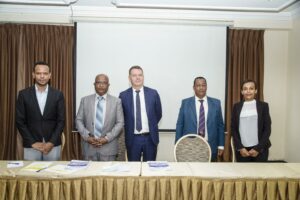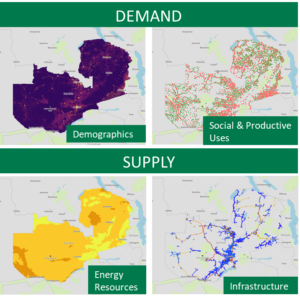On 30 September 2021, ACE TAF, ESMAP/Lighting Global and GOGLA launched the End-User Subsidies Lab. The Lab addresses the ‘affordability gap’ for consumers of standalone solar products and contributes to the attainment of SDG 7 on universal access to clean and reliable energy by 2030. Evidence shows that off-grid solar is the cheapest and fastest way to electrify people in rural areas that have no access to the grid. However, over 100 million people are not able to afford solar products at the current prices. End-user subsidies address this affordability gap by directly reducing costs for consumers. It is important that such subsidies are designed carefully so that they a) work alongside other ‘pro-poor solutions’ (e.g. fiscal support, financial innovations, supply-side subsidies), and b) do not impede other energy access efforts.
To achieve those goals, the End-User Subsidies Lab focuses on knowledge generation and exchange of best practices on designing effective programmes. Three webinars were organised between September and December 2021 featuring case studies from Rwanda, Bangladesh and Kenya where end-user subsidies have been implemented. The key take-aways from the webinars include:
- One-size does not fit-all: The design of end-user subsidies is complex given the unique circumstances in each country or sub-national area and must be taken into consideration when designing subsidies.
- A longer time horizon is required: End-user subsidy programme implementers must consider the results of the subsidy based on market conditions and not necessarily based on funding windows. The Kenya programme started in 2015 and is still on course, while the Bangladesh one lasted more than 10 years.
- Suppliers should be involved from the onset: Suppliers are required to have well trained technicians on the ground to do installation and offer timely after sales services and therefore must be involved from the beginning when designing the subsidy model. Tripartite agreements between the implementing partner, government agencies, and suppliers are useful in clarifying the roles and responsibilities of each partner.
- Awareness and capacity building at community level is key. In Kenya the end-user subsidy was leveraging a national cash transfer programme. After sensitization on the possibility of using the cash transfer top up for solar, it was impressive that 70% of the targeted beneficiaries did purchase solar products. This is significant, but also of note is that the subsidy programme was implemented in an arid area where food security is a challenge and beneficiaries of the cash transfer had to make a decision whether to buy food or purchase a solar product.
- Leverage other social safety net programmes carefully. Leveraging existing social safety net programs could be one entry point for solar end-user subsidy programmes, but this must be well thought out. Integration into other subsidies can make the design of the programme more complex and introduce delays in implementation.
- Information is still lacking on how to design and implement subsidy programmes. Organizations looking to implement end-user subsidies need more information on the targeting of beneficiaries, level of the subsidy, payment structures and user experience with the solar lighting products.
Listen to the webinar recordings and learn more about the End-User Subsidies Lab here.










